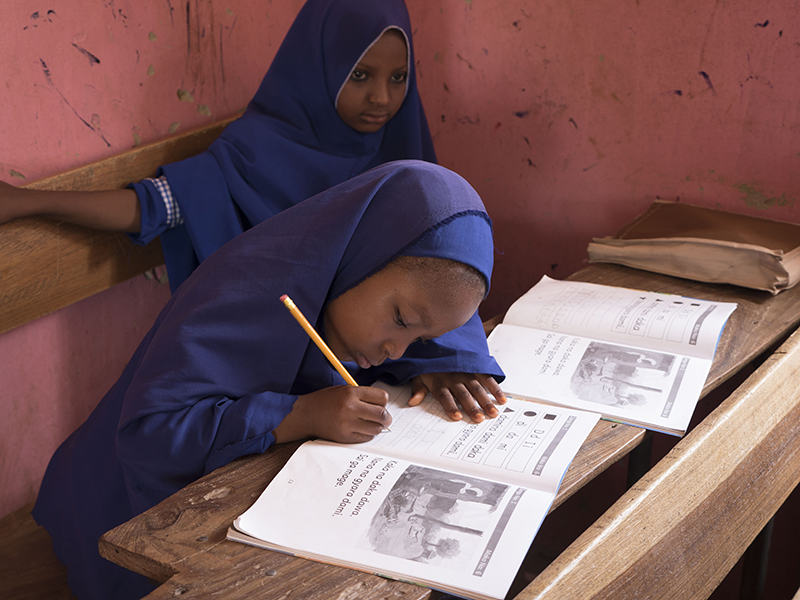
Photo Credit: Kunle Lawal/RANA project
Nothing has inspired me more than the sacrifices I have seen African parents make to send their children to school. In Swaziland in the 1990s, I calculated that a typical rural family spent over 60 percent of its disposable income to pay for school fees, books and uniforms. The reason families are willing to devote so much to educate their children was summed up by the pioneering American educator Horace Mann in 1848, when he wrote, “Education, then, beyond all other devices of human origin, is the great equalizer of the conditions of men, the balance-wheel of the social machinery.”
As our world has become more interconnected and technology-dependent, the role of education as the primary pathway to social and economic mobility has grown stronger. We now live in the most prosperous era in the history of mankind, but one where a quality education is the price of admission into the 21st century knowledge economy.
As more countries have prospered, the gap between the haves and the have nots — which, in most low- and lower-middle income countries, is the gap between the well-educated and the undereducated — has become a potentially destabilizing factor. Lack of education decreases life opportunities and increases political marginalization, perpetuating and exacerbating social and economic inequality. In an increasingly uncertain and volatile world, educational inequality not only is a main component of the poverty trap, but is also a tripwire for social strife and conflict.
Work done by FHI 360’s Education Policy and Data Center (EPDC) provides strong empirical evidence of the links between education inequality and the risk of conflict. Under UNICEF’s recently concluded Learning for Peace Initiative, the EPDC team constructed the largest database on education inequality to date. Policymakers should take heed of these important research findings:
As educational attainment has increased over time, inequalities have decreased. Inherently this makes sense. In previous decades, the completion of secondary school may have been reserved for an elite minority. As higher levels of education have become compulsory in many countries and economic development has reinforced the incentive households have to invest in education, the disparities between the more and less well-off has shrunk.
The relationship between inequalities and conflict has increased in the Education for All era. After 2000, countries with high levels of educational inequality are at double the risk of conflict occurrence. Even after controlling for factors such as national wealth, political regime type and geography, the EPDC team found a consistent relationship between inequalities in educational attainment and conflict outbreak. In fact, over the entire time span, there is a strong relationship between inequalities among subnational regions within countries and the occurrence of conflict. When considering inequalities between ethnic or religious groups, the relationship is strongest after 2000.
The evidence shows that conflict exacerbates education inequalities. Controlling for historical levels of conflict, the EPDC team was able to provide evidence for a causal relationship between conflict and increased education inequality. Not only is it harder for inequality to return to pre-conflict levels, but the effects are particularly pronounced for females and for the poor. For example, the gender parity ratio — a measure that compares female years of schooling to male years — decreases by 10 percent five years after the outbreak of conflict, and by more than 15 percent after 10 years. This means a worsening of female education outcomes relative to males, which is exacerbated over time.
This research reinforces the importance of meeting the demand for quality education in rich and poor countries alike. It is interesting to trace the evolution of education policy from calls for Education for All in 1990 that led to MDG 2, Achieve universal primary education, to today’s focus on inclusive, lifelong learning as a prerequisite for participating in the knowledge economy, as reflected in SDG 4, Ensure inclusive and equitable quality education and promote lifelong learning opportunities for all.
It is worth noting that we have done a better job of translating major policy objectives into effective action in the health sector than in education. When the world faces a major public health threat, governments and the international community mobilize to collectively counter that threat. We mobilize resources, finance research, identify solutions, and work across borders and international structures to mitigate the risks. This has allowed us to contain HIV/AIDS, virtually eradicate polio and launch a response to the Zika virus. Given what the research shows about the relationship between education equity and poverty and conflict, we should treat them with a similar level of urgency.
FHI 360 has recently partnered with Save the Children, UNICEF, World Vision, the People’s Action for Learning Network and many other organizations leading research and program implementation, with a common purpose of strengthening data and evidence on education equity as part of the Education Equity Research Initiative. Building on other global and regional efforts, this unique partnership will continue to build the evidence base to inform policy and influence practice on education equity — and move us all closer to fulfilling the promise of the Sustainable Development Goals.
